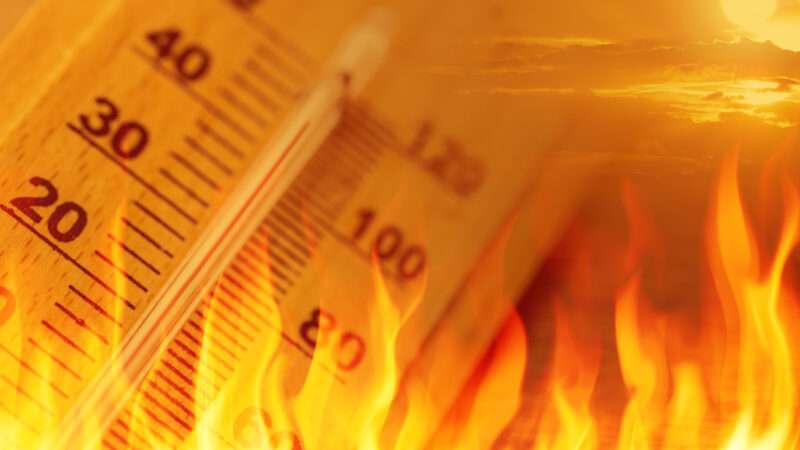
Too many climate researchers are making unrealistically dire projections about the future consequences of man-made climate change based on computer models that run way too hot, argues a new commentary in Nature.
The commentary's authors point out that the too-hot models reported in the sixth phase of the Coupled Model Intercomparison Project (CMIP6) failed to reproduce historical climate trends, thus casting considerable doubt on their more catastrophic temperature increase projections. Consequently, the researchers note that the former practice of "simply taking an average" of all of the models together leads to higher projections of warming than is warranted.
The United Nations' Intergovernmental Panel on Climate Change's Sixth Assessment Report (AR6) took this into account when evaluating model results and lowered projected temperatures by between 0.2 and 0.7 degrees Celsius for each greenhouse gas emissions scenarios used in its AR6 analyses. "Findings that show projected climate change will be 'worse than we thought' are often attributable to the hot models in CMIP6," observe the authors of the commentary. The authors urge other researchers to avoid the mistake of simply averaging climate model outputs as they seek to identify how climate change will affect future global and regional temperatures, precipitation, sea level, ecologies, and ocean heat content.
On top of the too-hot-model problem is the extensive and common use of the highly implausible, worst-case RCP/SSP5-8.5 greenhouse gas emissions scenario as the basis for making future climate projections. Among other problems with that scenario is that it assumes a sixfold rise in global coal consumption per capita by 2100. While coal use has experienced a post-pandemic rebound, most analyses expect a flattening of global consumption followed by a steep decline beginning later this decade.
This effects of this dubious combination—too-hot models and unrealistically high emissions scenarios—can be seen in the study "Avoiding ocean mass extinction from climate warming," published in Science last week. Based on that study, The New York Times warned, "Under the high emissions scenario that the scientists modeled, in which pollution from the burning of fossil fuels continues to climb, warming would trigger ocean species loss by 2300 that was on par with the five mass extinctions in Earth's past. The last of those wiped out the dinosaurs."
The two Princeton University researchers behind the ocean study compared their projections to the Permian age extinction event that happened some 250 million years ago and killed off more than 80 percent of marine species.
As it happens, the researchers' projected mass marine extinction 300 years hence follows from their use of "intermodel averages" that the Nature commentary warns against along with the implausibly high RCP/SSP5-8.5 emissions scenario. In that scenario, average global temperatures would rise by about 5 degrees C by the end of this century and by 18 degrees C in 2300. Considering that the difference between now and the last ice age is 6 degree C, humanity would have bigger problems than marine extinctions were temperatures to warm up 18 degrees C.
To be fair, the two Princeton researchers did also sketch a scenario in which an increase global temperatures of around 2 degrees C above the preindustrial average resulted in the extinction of only about 4 percent of marine species due to climate change by the end of this century. The good news is that recent research suggests that, based on more probable greenhouse emissions trajectories, future man-made warming is likely to fit this scenario and rise by around 2 degrees C above the preindustrial average by the end of this century.
Interestingly, the accompanying commentary "A stark future for ocean life" in Science noted, "Fortunately, greenhouse gas emissions are not on track for the worst-case scenario given policies to limit greenhouse gas emissions and the slower-than-projected growth of global economies." Of course, focusing on the worst-case scenario inflated by climate model averaging and implausible emissions trajectories is precisely what garnered headlines warning that "Ocean animals face a mass extinction from climate change."
Let's hope that more climate change researchers will take the admonitions to eschew inflated model projections and implausible emissions scenarios to heart. Exaggerating the real problem of man-made climate change is not helpful for guiding the public and policy makers in their efforts to mitigate and adapt to rising global temperatures.
The post Stop Using 'Too Hot' Climate Models, Says <em>Nature</em> Commentary appeared first on Reason.com.







